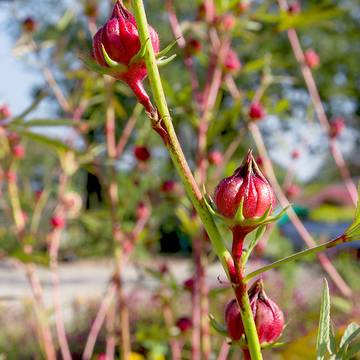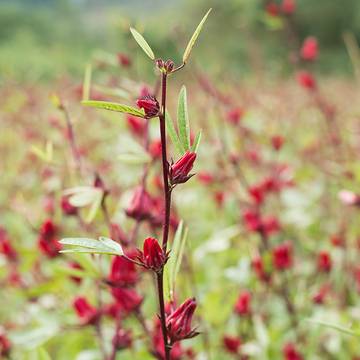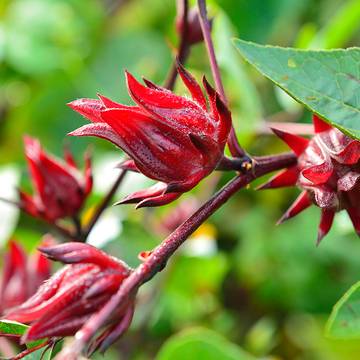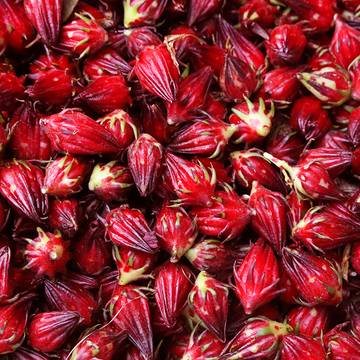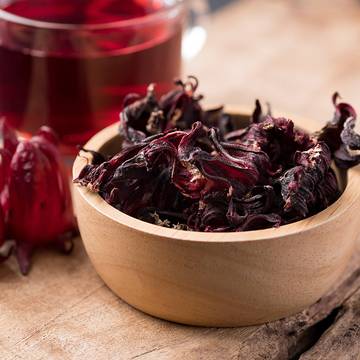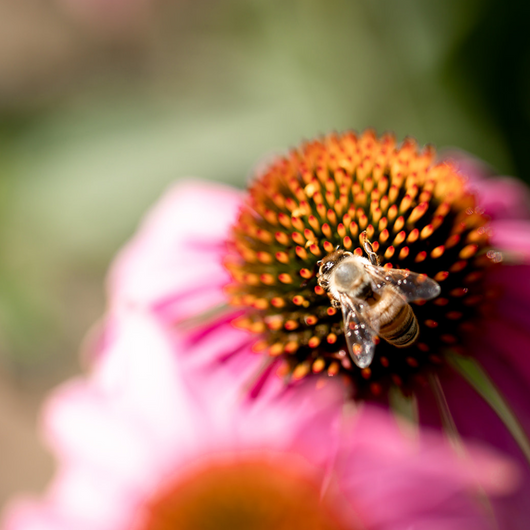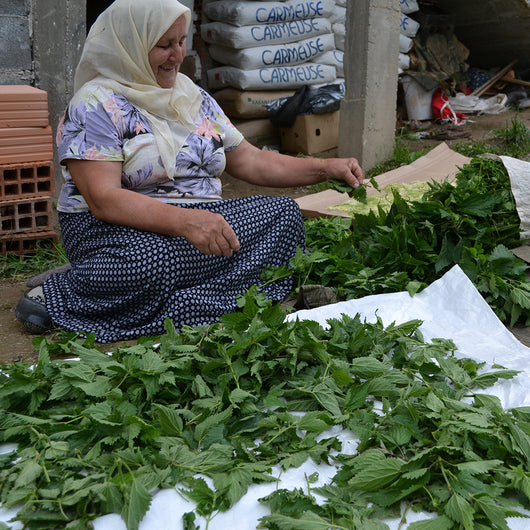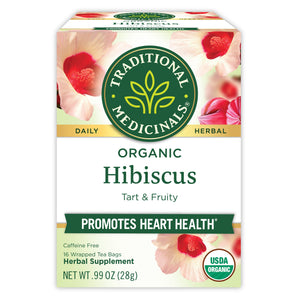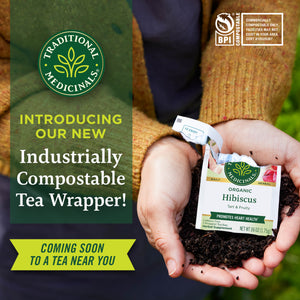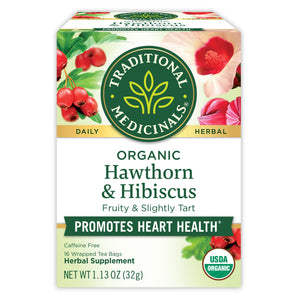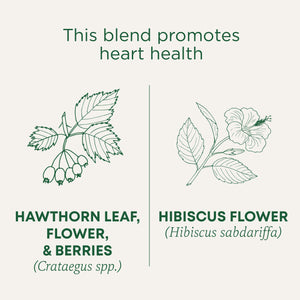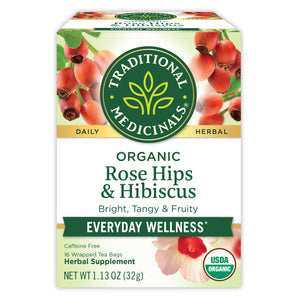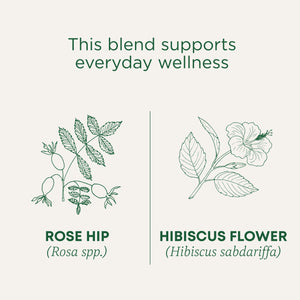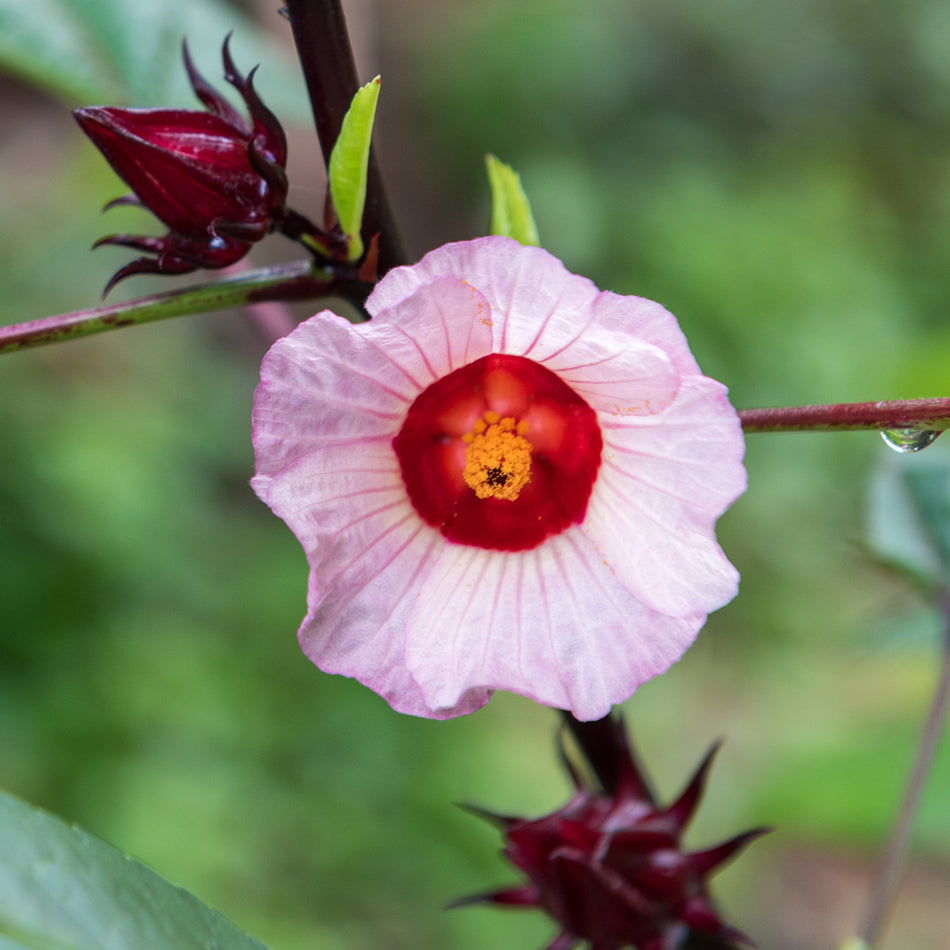
Hibiscus
Hibiscus sabdariffaCommon benefits of hibiscus include cardiovascular and diuretic support, although simply enjoying it as a refreshingly tart drink is an herbal pleasure within itself!*
Gladden the heart with this tart & tangy ally.
What are the Benefits of Hibiscus?
When you brew our Hibiscus tea, you’ll witness its rich ruby color infusing into your cup almost instantly. We consider it a visual representation of the health benefits of hibiscus releasing into your cup.
Its deep red hue is a unique characteristic that’s useful beyond beauty. It’s a direct indicator of the presence of anthocyanins, which play an important role in hibiscus’ ability to support the cardiovascular system including heart health.* As a diuretic, hibiscus supports urination and helps the kidneys in their detoxification function.*
To receive the benefits of hibiscus’ medicinal, water-soluble compounds, it is best consumed as an herbal infusion, otherwise known as a tea. Classified as a refrigerant in Traditional Chinese Medicine, a hot or cold infusion of hibiscus can be enjoyed for its cooling properties on a hot summer day. With food safety in mind, we recommend brewing with boiling water first, then allowing to cool.
Folklore & Historical Use of Hibiscus
The origin of hibiscus is debated in the plant nerd community. It possibly originated in West Africa and Angola, making its way via tropical America to Indonesia by the 17th century. Thanks to its beloved beauty and benefits, it is now cultivated worldwide in the tropics, as well as in Europe.
Its pleasantly tangy taste that’s mildly fruity and lemony, made it a classic West Indian ingredient to color and flavor rum. Other cultures utilize the oil-containing seeds as food.
Historical records dating around 1830 reported that the mucilaginous, or slippery, nature of the herb was being used as a softening agent in poultices. Not until the beginning of this century was it first described as a mucilloid and aromatic substance for tea mixtures and other refreshing drinks. While Hibiscus sabdariffa is the medicinally accepted species that we use, other species have been used in China and Brazil for other purposes.
Botanical Description & Habitat
There are several hundred species of hibiscus shrubs and trees, often peppered with beautiful flowers that can be white, pink, red, yellow or even purple. For our tea, we rely on Hibiscus sabdariffa, a species known for striking white flowers with red centers, and use the calyces, which are red, pliable pods that appear after the flowers bloom.
Hibiscus can be grown in areas that get a warm and wet summer or in temperate climates like California. In colder places you’ll want to start the seeds indoors, away from potential frost. Once the cold weather has passed you can transplant them outdoors. Hibiscus shrubs like water, and you’ll know the herbal medicine is almost ready to be harvested once the flowers appear. A little over a week after the flowers bloom, you’ll notice flexible red calyces appearing. Pick them regularly and use them fresh or dry them to enjoy throughout the year.
When To Use Hibiscus
Enjoy regularly to give your heart a little love.
Sip iced or warm to get things flowing.
The Business of Sustainable Plants
Our business is rooted in plants, and for us, it’s a business imperative that we care for the ecosystems where these plants live and thrive. We believe that everything is interconnected, which means supporting ecosystems and the farmers and collectors who harvest and gather our herbs. Finding opportunities to reduce or eliminate emissions at the source, we support organic and regenerative farming practices as well as voluntary certifications like Organic and FairWild. These ensure the absence of pesticides, herbicides, as well as the ongoing sustainability of wild collection, and the health and livelihoods of the collectors who forage. Josef Brinckmann, Traditional Medicinals’ Research Fellow, Medicinal Plants and Botanical Supply, asserts, “Everyone has a role to play in preserving biological diversity. One way of doing that is by equitably supporting the local people to serve as stewards of the land.”
It Starts with Organic
We choose to source organic because we believe in the positive impacts it has on environmental sustainability, biodiversity, and overall ecosystem health. Organic helps us increase transparency while prioritizing consumer well-being and farmer success, which is key to producing the high-quality herbs we source. In 2021, we procured 2.73 million pounds of certified organic herbs, over 99.7% of our total botanical herbs purchased. Volumes were down slightly from FY20 due to timing of inventories received.
The impact from organic farming creates a vital ecosystem through improved soil health, water quality, pollinator habitats, and biodiversity. Organic farms also have increased carbon sequestration potential through long-term carbon storage in the soil, helping to mitigate climate change.
One of the benefits of organic that we most value is farmer health. We care deeply about the people who produce our herbs, ensuring that they are not exposed to synthetic chemicals found in conventional agriculture.
Fair Trade
We believe that everyone deserves a fair wage for hard work. That’s one of the reasons why we’re committed to fair trade. Traditional Medicinals® is a registered Fair Trade “brand holder”, “licensee” and “manufacturer,” and our products are certified by Fair Trade USA, an independent third-party certifier. We were an early adopter of Fair Trade, having launched our first fair trade tea product in 1998, just one year after Fairtrade International (FLO) was established. We continue to work closely with our network of producers to help them to implement fair trade standards and get certified.
Hawthorn & Hibiscus Tea
Additional Information
Important Precautions:
Consult a health care professional prior to use of pregnant or breastfeeding.
Legal Disclaimer:
The information and other content in this article is designed to provide a general overview of the botany, cultural history, and traditional uses of this herb. It is not intended and should not be construed as health advice. Every person is unique and you should consult with your health care provider before using any herbal product or supplement.

